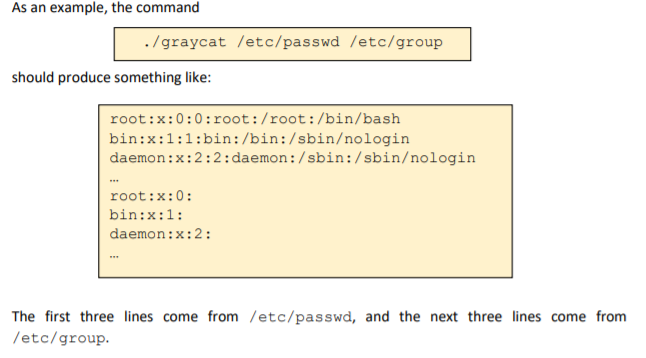Question
Clarke 2022 A UNIXs cat command concatenates a number of said files by reading their contents and then writing them in a direct sequence. Create
Clarke 2022
A UNIXs cat command concatenates a number of said files by reading their contents and then
writing them in a direct sequence.
Create a C program named graycats.c.
for this code, you will re-implement a simple form of cat which takes file or more than one files
paths as command-line arguments (up to the limit prescribed by Linux) and writes the
contents of the files to stdout.
You may use open, read, write, and close POSIX API calls as well as their related
constant definitions.
You can find documentation about each of these API calls in section two of the Linux
man pages (e.g., man 2 open).
You may NOT use any functions defined in stdio.h or stdio
Man pages: Recall that the UNIX manual (man) pages are a very good resource to learn. Each man
page enumerates the headers required to use a POSIX API call or function and describes the
functions interface and semantics. You will find POSIX API calls in section two of the man pages (for
example, man 2 open).
open: Opening your input file does not really require any special flags, so you can pass 0 as the flag
argument to open.
Buffers: The read and write POSIX API calls operate on buffers of bytes. The easiest way to
allocate such a buffer is by declaring a stack char array. This is described in K&R [1, 5.3].
Error handling: Each of the POSIX API calls you are to use return a -1 if they encounter any type of error.
Your program should write a small message to stderr (i.e., file descriptor 2/STDERR_FILENO) if it
encounters an error. Doing this will aid in troubleshooting, and it will make your program more
robust.

Step by Step Solution
There are 3 Steps involved in it
Step: 1

Get Instant Access to Expert-Tailored Solutions
See step-by-step solutions with expert insights and AI powered tools for academic success
Step: 2

Step: 3

Ace Your Homework with AI
Get the answers you need in no time with our AI-driven, step-by-step assistance
Get Started


